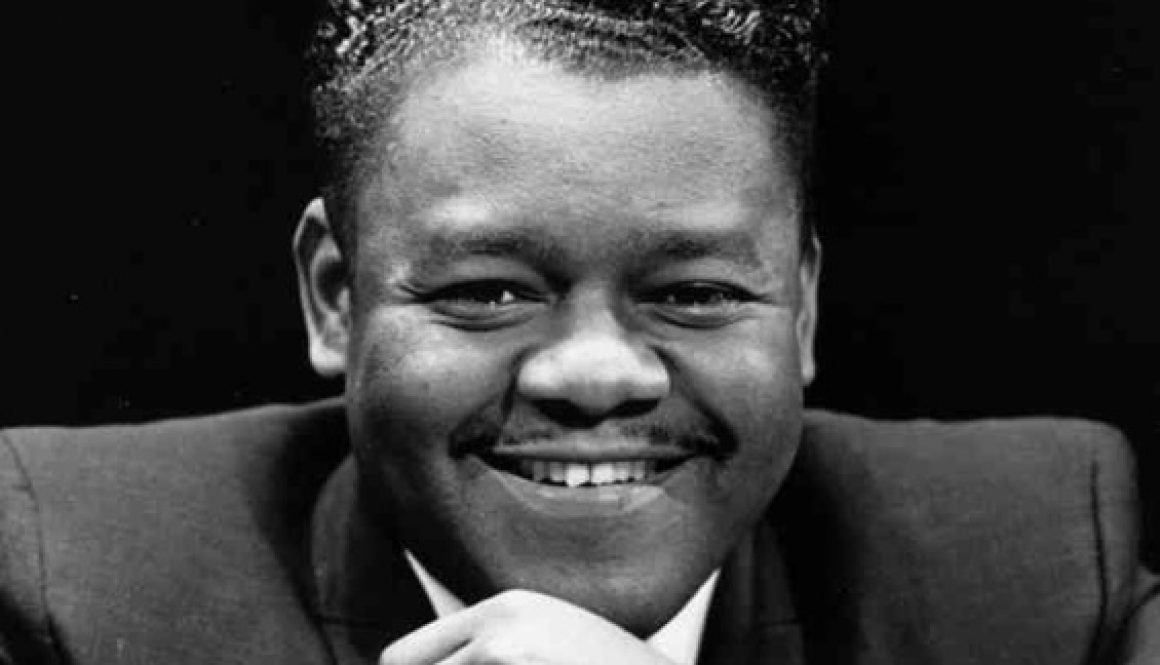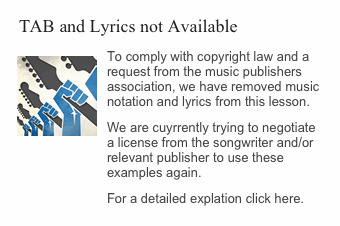Going to Kansas City – The Blues – Part 3

Okay, if you’re still with me, then let’s wrap up our (all too) brief introduction into the (very basic) blues. Today we’re going to look at three things: the “turn around,” the (again, very basic) blues lead scale and what I call the “grand finale.”
I have chosen to use the old blues standard (Going To) Kansas City for this lesson because I want to demonstrate these techniques on a song that you probably have heard but are not overly familiar with. This way you won’t have Eric Clapton’s riff running through your heads when we come up with some simple leads and fills. Deal?
Turning Around
For the intent of this lesson, which is to make this as painless a process as possible, we will play this song in the key of E. So we will be using our standard twelve bar blues shuffle (and do feel free to review that in the last two “Easy Songs for Beginners” pieces – Before You Accuse Me and Roll Over Beethoven).
In the simplest possible term, a “turnaround” is a complicated way of saying “we’re going to end this verse/chorus/whatever in such a matter that starting the next verse will sound even more natural than it does.” Okay, so that’s not a very simple explanation. How about this, “we’re going to go from “I” to “V” so that it’ll sound really cool when we start the next verse on “I” again?” So if we take the last four bars of our typical twelve bar blues pattern (and in these examples we will be using the key of E as well):
we would simply replace the last measure of “I” with a measure of “V.” Like so:
That’s really easy, both in terms of idea and execution. But like almost anything else in music, it is simply the tip of the iceberg. The “standard” turnaround in blues has become (slightly) more complex than this. Instead of measure twelve being four counts of “V,” we start out with one count of “I,” one count of “IV” and end with the final two counts on “V.” An added wrinkle to this is to go from IV to V chromatically, that is to throw in the half step between these two chords. Here’s how both of these would look in the key of E:
And of course, this is also just the start of what you can do. Often times, the eleventh measure will consist of a chromatic descent based on the “I” chord. This chromatic play will end on “I” just in time to go to “IV” and then chromatically again up to “V.” This is probably the most used turnaround – it is easier to do than you think and it will make you sound soooooo cool:
In case you’re interested, this one is actually based on a “D” shaped chord and we will be covering not only how it works but all sorts of other things we can do with it sometime later this spring.
The Simplest Possible Lead/Fills Scale
We’re not going to get too much into the theory behind this for now, simply for the reason that getting into it is part of what took me so long in getting this installment online. Paul may forgive me many things but a thirty page lesson is neither “easy” nor “for beginners.”
Blues is a favorite of many guitarists because it easily lends itself to, shall we say, flashier playing than simple strumming. Most blues songs fall into what we describe as “call and response” styles, meaning that a line is sung, then guitar plays something funky and then the voice sings again and then the guitar and they playfully chase each other over the alternating lines of the song. This “style” is older than the blues and can be heard in the music of virtually every culture this planet has ever played host to.
What we have come to think of as the blues actually started out as simple songs done by a single singer/guitarist. And that’s on an acoustic guitar, mind you – no electric models in those days. Since we have already discussed how much effort can go into simply strumming and playing at the same time, think of how daunting it must appear to sing, strum and play a lead of sorts all by one’s lonesome!
But if you take the time to learn and study a few scales and riffs (musical phrases often derived from said scales) it can not only be very easy but very entertaining.
Now, there are many many scales available to the guitarist. And don’t be fooled into thinking that all scales have seven or eight notes. Remember the definition of scales we used in The Musical Genome Project: “A scale is the sequence of notes used from a specific note to the next occurrence of that same note.” Nowhere in that definition is a requisite number of notes. We assume that it must at least be three, since we call the space between two notes an “interval.” And if you read my piece last year, Scales Within Scales, you know that there are scales with fewer than seven notes.
One of these scales is the Pentatonic scale. As one might suspect it has five notes in it. And, yes, of course, there are all sorts of arguments as to which five notes. We are going to avoid these headaches by discussing the “Blues Minor Pentatonic Scale” which is used so much in standard blues songs.
The Blues Minor Pentatonic Scale consists of the root, the minor third, the fourth, the fifth and the minor seventh. So in the key of E, this would mean E, G, A, B and D. If we were to plot out these notes on our fretboard in the easiest posible way, using as many open strings as we could, this is what it would look like:
You can now see why I like playing blues in the key of E – it leads to all sorts of easy fills by means of simply hammering on or pulling off string on the second or third frets. Suffice it to say, many blues players rely on the minor pentatonic scale from which to develop their leads and fills – going from chords or a shuffle while singing to a fill or lead requires little to no repositioning along the fretboard.
Here are some easy riffs for both the E and A chords.
Note that since you are only on the “V” for one measure, you don’t really need to concern yourself with playing any fills over that chord.
Finally Finale
Blues songs have this tendency to go on seemingly forever (maybe turnarounds have something to do with that, no?) so it’s also important to have something that screams out “this song is over already!!!”
Yes, it’s needless to point out that there are countless ways of ending a piece. As we read in Five To One (or “Home Home Again”), the “V to I” cadence still seems to be the best at saying, “We’re done now.” Here is a V – I cadence tacked on to first half of the turnaround we learned earlier:
Another popular ending is to form chords to go along with a descending chromatic line. Here is one I particularly like when playing in the key of E:
You can see that all of these chords are part of the I – IV – V blues pattern. Even the Am chord forms a nice plagal cadence back to E before finally resolving with an authentic cadence (B7 to E7). And you can hear that when you play simply these particular strings that you have given yourself a descending melody line that is also quite pleasing.
Okay, let’s take this stuff and throw it all together and see how it works. Remember to take it slowly as you have to. Getting the timing down is important and being fast won’t matter if your playing isn’t clean.
Something to note: for the sake of not driving myself crazy writing this out, I didn’t put the “triplet” sign over any of the shuffle rhythm. Just take it as a given that when you see a dotted eighth note followed by a sixteenth note that this is a shorthand for the shuffle rhythm, the same one we used in Before You Accuse Me.
You will also notice that I changed the rhythm around in some places to give it a more playful feel. The dramatic strumming in the second verse adds a bit of tension and variety and this is something else that you have undoubtedly heard many many times before. Sometimes not playing is just as important as playing but that’s a subject for another time…
Next time out (and believe me, there will hopefully not be a time lapse like this until Paul goes on sabbatical again…) we learn about adding an “alternating bassline” to a song. And then the on following song we’ll start with some very simple fingerpicking.
As always, please feel free to write in with any questions, comments, concerns or even a song, riff or lead you’d like to see covered in a future “Songs For Beginners” article. You can either drop off a note at the Guitar Forums or email me directly at [email protected].
Until next time…
Peace
On February 11, 2010 we received a letter from lawyers representing the NMPA and the MPA instructing us to remove guitar tab and lyrics from this page. You can read more about their complaint here. Alternatively, you can still find this complete article with tab and lyrics archived here.























d
October 4th, 2014 @ 9:00 pm
Hello David,
Appreciate all the resources you put up. Can’t say enough about how nice it is to have these lessons.
Quick question about the slurs. Are they all supposed to be played together with hammers or pull offs? what about under over slur in example 7?